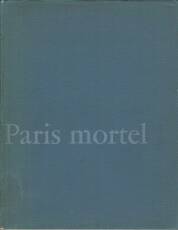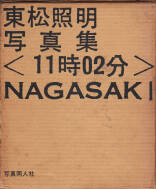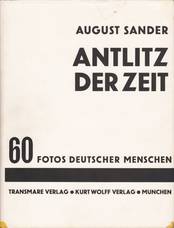Pkin (signed - last copy)
by Jacek Fota
Photographs: Jacek Fota
Text: Agnieszka Rasmus-Zgorzelska
Publisher: Fundacja Centrum Architektury
112 pages
Pictures: 70
Year: 2015
ISBN: 978-83-937716-6-0
Comments: Hand made book, hardcover, 23.5 x 29.6 cm, first edition: 400 + 30 copies (only 150 for sale).
The Palace of Culture and Science in Warsaw – less and less a symbol of Stalinist domination, more and more an icon of the city. It evokes strong emotions all the while remaining largely unexplored, and as such a tad alien. At the time of planning, in 1952, the monumental structure was intended to transform the scale of Warsaw cityscape. The skyscrapers that now cluster to the west of the Palace compete with the building. Nonetheless, due to vast and empty parade grounds surrounding it, the Palace towers over Warsaw thus far unthreatened. After 1989 its demolition was repeatedly debated, albeit never seriously considered. In 2007 the building was finally listed.
The Palace was erected in the years 1952-55 by 3,500 Soviet builders on the bombed 19th century quarters in the city centre. The bulk of construction costs was covered by the Soviet government. Lev Rudnev, the Palace's chief designer, modelled the project on the Stalinist “Seven Sisters” skyscrapers in Moscow, themselves inspired by American architecture.
More books by Jacek Fota
more books tagged »Polish« | >> see all
-
Fragile - World Press Photo
by Joop Swart Masterclass 2007
sold out -
Swell (signed)
by Mateusz Sarello
sold out -
KARCZEBY (signed)
by Adam Panczuk
sold out -
The Grey
by Rafal Milach
sold out -
American Dream (signed)
by Agnieszka Rayss
Euro 40 -
Swell (last copy)
by Mateusz Sarello
sold out
more books tagged »architecture« | >> see all
-
Waiting for the End of the World (signed)
by Richard Ross
Euro 45 -
Hong Kong Inside Outside
by Michael Wolf
sold out -
After the Thaw (last copy - review copy)
by Tomoko Yoneda
sold out -
720 (two times around) (signed - last copy)
by Andrew Phelps
sold out -
Swedish red
by Joakim Eneroth
Euro 28.80 -
One Picture Book 89: Corridors (signed + print)
by Steve Kahn
Euro 45
more books tagged »soviet« | >> see all
-
Gandras
by Jasper Bastian
Euro 95 -
Wonderland: A Fairytale of a Soviet Monolith (signed)
by Jason Eskenazi
sold out -
Planet Lithuania
by Antanas Sutkus
sold out -
Soviet Bus Stops Volume II
by Christopher Herwig
sold out -
11.41 (signed)
by Michal Luczak
Euro 38 -
Soviet Bus Stops
by Christopher Herwig
sold out
more books tagged »Warsaw« | >> see all
-
The First March of Gentlemen (signed - last copy)
by Rafal Milach
sold out -
Distant Place
by Sputnik Photos
Euro 75 -
The First March of Gentlemen (book + print)
by Rafal Milach
sold out
more books tagged »post-Soviet« | >> see all
-
Mühit (signed)
by Ilkin Huseynov
sold out -
Not Natasha
by Dana Popa
sold out -
DKDANCE (singed book+print)
by Dmitry Lookianov
sold out -
High Hopes
by Vitus Saloshanka
Euro 44 -
be happy! - special edition (book + signed print)
by Igor Samolet
sold out -
Forget Your Past (signed)
by Nikola Mihov
sold out
more books tagged »interior« | >> see all
-
Ik ben jou (signed)
by Milou Abel
sold out -
7 Rooms (last copy)
by Rafal Milach
sold out -
7 Rooms (second edition)
by Rafal Milach
sold out -
Timekeepers (collector's edition - last copy)
by Matjaž Tančič
Euro 295 -
Sven
by Peter de Ru
sold out -
Momentum (signed)
by Andreas H. Bitesnich
Euro 250
Random selection from the Virtual bookshelf josefchladek.com
Pkin (signed - last copy)
by Jacek Fota
Photographs: Jacek Fota
Text: Agnieszka Rasmus-Zgorzelska
Publisher: Fundacja Centrum Architektury
112 pages
Pictures: 70
Year: 2015
ISBN: 978-83-937716-6-0
Comments: Hand made book, hardcover, 23.5 x 29.6 cm, first edition: 400 + 30 copies (only 150 for sale).
The Palace of Culture and Science in Warsaw – less and less a symbol of Stalinist domination, more and more an icon of the city. It evokes strong emotions all the while remaining largely unexplored, and as such a tad alien. At the time of planning, in 1952, the monumental structure was intended to transform the scale of Warsaw cityscape. The skyscrapers that now cluster to the west of the Palace compete with the building. Nonetheless, due to vast and empty parade grounds surrounding it, the Palace towers over Warsaw thus far unthreatened. After 1989 its demolition was repeatedly debated, albeit never seriously considered. In 2007 the building was finally listed.
The Palace was erected in the years 1952-55 by 3,500 Soviet builders on the bombed 19th century quarters in the city centre. The bulk of construction costs was covered by the Soviet government. Lev Rudnev, the Palace's chief designer, modelled the project on the Stalinist “Seven Sisters” skyscrapers in Moscow, themselves inspired by American architecture.
More books by Jacek Fota
more books tagged »Polish« | >> see all
-
Fragile - World Press Photo
by Joop Swart Masterclass 2007
sold out -
Swell (signed)
by Mateusz Sarello
sold out -
KARCZEBY (signed)
by Adam Panczuk
sold out -
The Grey
by Rafal Milach
sold out -
American Dream (signed)
by Agnieszka Rayss
Euro 40 -
Swell (last copy)
by Mateusz Sarello
sold out
more books tagged »architecture« | >> see all
-
Waiting for the End of the World (signed)
by Richard Ross
Euro 45 -
Hong Kong Inside Outside
by Michael Wolf
sold out -
After the Thaw (last copy - review copy)
by Tomoko Yoneda
sold out -
720 (two times around) (signed - last copy)
by Andrew Phelps
sold out -
Swedish red
by Joakim Eneroth
Euro 28.80 -
One Picture Book 89: Corridors (signed + print)
by Steve Kahn
Euro 45
more books tagged »soviet« | >> see all
-
Gandras
by Jasper Bastian
Euro 95 -
Wonderland: A Fairytale of a Soviet Monolith (signed)
by Jason Eskenazi
sold out -
Planet Lithuania
by Antanas Sutkus
sold out -
Soviet Bus Stops Volume II
by Christopher Herwig
sold out -
11.41 (signed)
by Michal Luczak
Euro 38 -
Soviet Bus Stops
by Christopher Herwig
sold out
more books tagged »Warsaw« | >> see all
-
The First March of Gentlemen (signed - last copy)
by Rafal Milach
sold out -
Distant Place
by Sputnik Photos
Euro 75 -
The First March of Gentlemen (book + print)
by Rafal Milach
sold out
more books tagged »post-Soviet« | >> see all
-
Mühit (signed)
by Ilkin Huseynov
sold out -
Not Natasha
by Dana Popa
sold out -
DKDANCE (singed book+print)
by Dmitry Lookianov
sold out -
High Hopes
by Vitus Saloshanka
Euro 44 -
be happy! - special edition (book + signed print)
by Igor Samolet
sold out -
Forget Your Past (signed)
by Nikola Mihov
sold out
more books tagged »interior« | >> see all
-
Ik ben jou (signed)
by Milou Abel
sold out -
7 Rooms (last copy)
by Rafal Milach
sold out -
7 Rooms (second edition)
by Rafal Milach
sold out -
Timekeepers (collector's edition - last copy)
by Matjaž Tančič
Euro 295 -
Sven
by Peter de Ru
sold out -
Momentum (signed)
by Andreas H. Bitesnich
Euro 250
Random selection from the Virtual bookshelf josefchladek.com
Pkin (signed - last copy)
by Jacek Fota
Photographs: Jacek Fota
Text: Agnieszka Rasmus-Zgorzelska
Publisher: Fundacja Centrum Architektury
112 pages
Pictures: 70
Year: 2015
ISBN: 978-83-937716-6-0
Comments: Hand made book, hardcover, 23.5 x 29.6 cm, first edition: 400 + 30 copies (only 150 for sale).
The Palace of Culture and Science in Warsaw – less and less a symbol of Stalinist domination, more and more an icon of the city. It evokes strong emotions all the while remaining largely unexplored, and as such a tad alien. At the time of planning, in 1952, the monumental structure was intended to transform the scale of Warsaw cityscape. The skyscrapers that now cluster to the west of the Palace compete with the building. Nonetheless, due to vast and empty parade grounds surrounding it, the Palace towers over Warsaw thus far unthreatened. After 1989 its demolition was repeatedly debated, albeit never seriously considered. In 2007 the building was finally listed.
The Palace was erected in the years 1952-55 by 3,500 Soviet builders on the bombed 19th century quarters in the city centre. The bulk of construction costs was covered by the Soviet government. Lev Rudnev, the Palace's chief designer, modelled the project on the Stalinist “Seven Sisters” skyscrapers in Moscow, themselves inspired by American architecture.
More books by Jacek Fota
more books tagged »Polish« | >> see all
-
Fragile - World Press Photo
by Joop Swart Masterclass 2007
sold out -
Swell (signed)
by Mateusz Sarello
sold out -
KARCZEBY (signed)
by Adam Panczuk
sold out -
The Grey
by Rafal Milach
sold out -
American Dream (signed)
by Agnieszka Rayss
Euro 40 -
Swell (last copy)
by Mateusz Sarello
sold out
more books tagged »architecture« | >> see all
-
Waiting for the End of the World (signed)
by Richard Ross
Euro 45 -
Hong Kong Inside Outside
by Michael Wolf
sold out -
After the Thaw (last copy - review copy)
by Tomoko Yoneda
sold out -
720 (two times around) (signed - last copy)
by Andrew Phelps
sold out -
Swedish red
by Joakim Eneroth
Euro 28.80 -
One Picture Book 89: Corridors (signed + print)
by Steve Kahn
Euro 45
more books tagged »soviet« | >> see all
-
Gandras
by Jasper Bastian
Euro 95 -
Wonderland: A Fairytale of a Soviet Monolith (signed)
by Jason Eskenazi
sold out -
Planet Lithuania
by Antanas Sutkus
sold out -
Soviet Bus Stops Volume II
by Christopher Herwig
sold out -
11.41 (signed)
by Michal Luczak
Euro 38 -
Soviet Bus Stops
by Christopher Herwig
sold out
more books tagged »Warsaw« | >> see all
-
The First March of Gentlemen (signed - last copy)
by Rafal Milach
sold out -
Distant Place
by Sputnik Photos
Euro 75 -
The First March of Gentlemen (book + print)
by Rafal Milach
sold out
more books tagged »post-Soviet« | >> see all
-
Mühit (signed)
by Ilkin Huseynov
sold out -
Not Natasha
by Dana Popa
sold out -
DKDANCE (singed book+print)
by Dmitry Lookianov
sold out -
High Hopes
by Vitus Saloshanka
Euro 44 -
be happy! - special edition (book + signed print)
by Igor Samolet
sold out -
Forget Your Past (signed)
by Nikola Mihov
sold out
more books tagged »interior« | >> see all
-
Ik ben jou (signed)
by Milou Abel
sold out -
7 Rooms (last copy)
by Rafal Milach
sold out -
7 Rooms (second edition)
by Rafal Milach
sold out -
Timekeepers (collector's edition - last copy)
by Matjaž Tančič
Euro 295 -
Sven
by Peter de Ru
sold out -
Momentum (signed)
by Andreas H. Bitesnich
Euro 250
Random selection from the Virtual bookshelf josefchladek.com

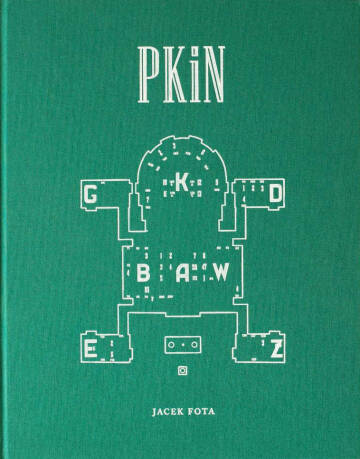












































;jpg?c=30680946c79018a3c23d7b3ea13e8de6)
;jpg?c=ec4aeac5344f66cbf1a202922e5253c4)

;jpg?c=da946a13da0648642693b2384b444174)


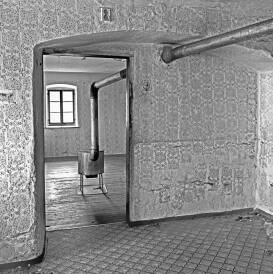

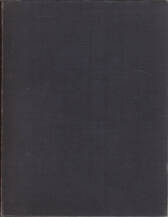
;jpg?c=ff33816574d1d0254cb7d1d5de5047a6)
